How It's Made: Soft Shackles & LED Covers
Somebody built that! The parts that make your LEDs legal and yanks safe.
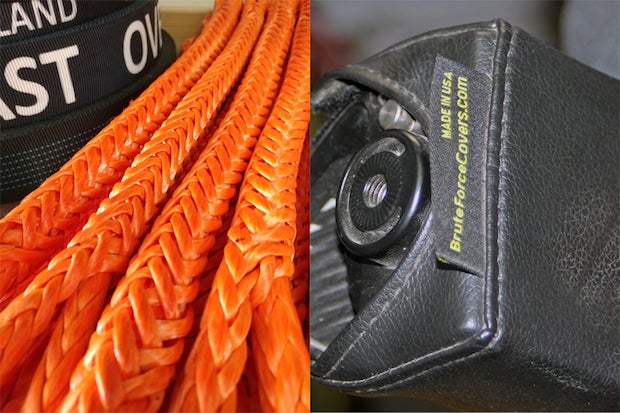
Hold a product - be it a foam cup, a USB cable, or a 10mm box wrench - and it's easy to ignore what it took to put it in your hand. Then, consider what you paid: how do you think the price of a two-cent cup, a two-dollar cable, or a 12-dollar tool reflects on its production cost?
Capitalism is complicated, but it makes things affordable. How long would it take YOU to make a wrench that comes close to a Craftsman 10mm?
Every "thing" that you have was made: designed, sourced, manufactured, marketed and distributed. Off-Road.com took that logic and came up with our first How It's Made segment, featuring ostensibly simple gear like Brute Force's LED covers, and Southeast Overland's 3/8" soft-shackle. And while you don't want to read every step of manufacturing (and we can't give you trade secrets), we like to make sure that consumers know the story behind the products you use off-road.
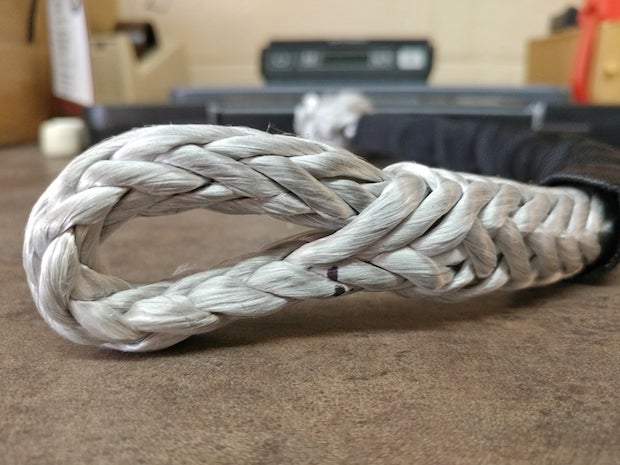
The Soft Shackle by Southeast Overland
It's just rope and a knot, right? That's got to be cheap, right? Not when quality matters: especially not when pulling a truck off the rocks. Getting products made with the right materials can be the difference between a safe recovery and catching a D-ring with your piehole.
Soft shackles offer numerous advantages, like being low weight, being easy to wrap around just about any recovery point and not leaving scratches behind. Plus, soft shackles are stronger than an equivalent length of wire. Not to mention, if they happen to fail, soft shackles will allow your winch cable or chain to fall to ground, rather than being wipped around at high-speed, possibly causing injuries.
"Educating our customers about quality is essential to our products' value," explained Steve Springs, owner and lead splicer at Southeast Overland. "I can buy a fake soft shackle for the price of a Happy Meal, and usually I can tell right off that it's a crappy counterfeit. Every now and then we'll buy one or two shackles we know were made in China, and even when the craftsmanship appears good – good enough to hide quality issues – the strength is not in there."
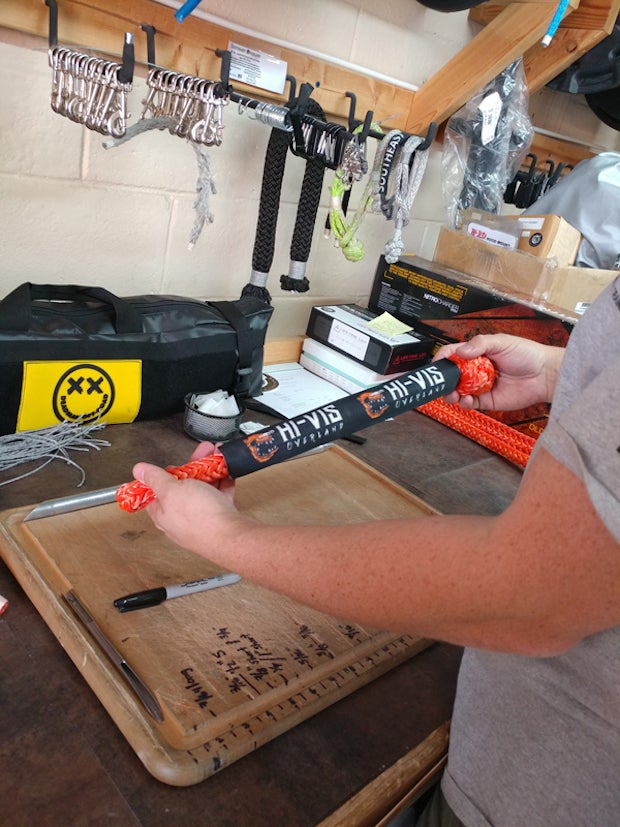
The high-strength soft shackles sold by Southeast are used by four-wheelers every day. That use depends on trust in the strength of the shackle. "Once we figured out the materials we wanted to use, it was easy to source them so long as we kept to our standards," added Springs. "Standards matter. The ability to depend on materials made in America is essential to the ability to trust it."
Springs was a professor at Clemson in a previous life. In part, he taught about Chinese manufacturing practices. "Their stuff is only as good as it has to be to make you think it will work. In the case of soft shackles, the products we'd see from China are not the right fiber quality, made of cheaper chemicals, woven differently, or not as well tested. They're crap. It's a question of fraudulent or substandard quality, and of actual counterfeits. The problem is real."

"The primary issue was finding the correct materials. There's an overabundance of the 12-strand Dyneema SK75 (that's used for things like recovery straps, winch lines and our soft shackle), but not all of it is the real thing, or the right thing," continued Springs.
"It's hard to find high-quality 12-strand DyneemaSK75. It's that quality issue that makes the rope work – the material is not exotic in and of itself when it's real, but is it? There's a lot of cheap winch line coming out of China. They'll say they're selling same fiber that is made in the U.S., but this is like saying all cotton is the same. There's good cotton, cheap cotton, dirty cotton, fine cotton, everything from burlap to 300-thread sheets."
"The solution is to only use made-in-America fibers. It's not only a question of whether the tiny small fibers in the material are made here, but also where they were woven: how the weave is done matters for functioning strength - the rope woven in the US is going to be done the right way - production standards matter in the U.S."
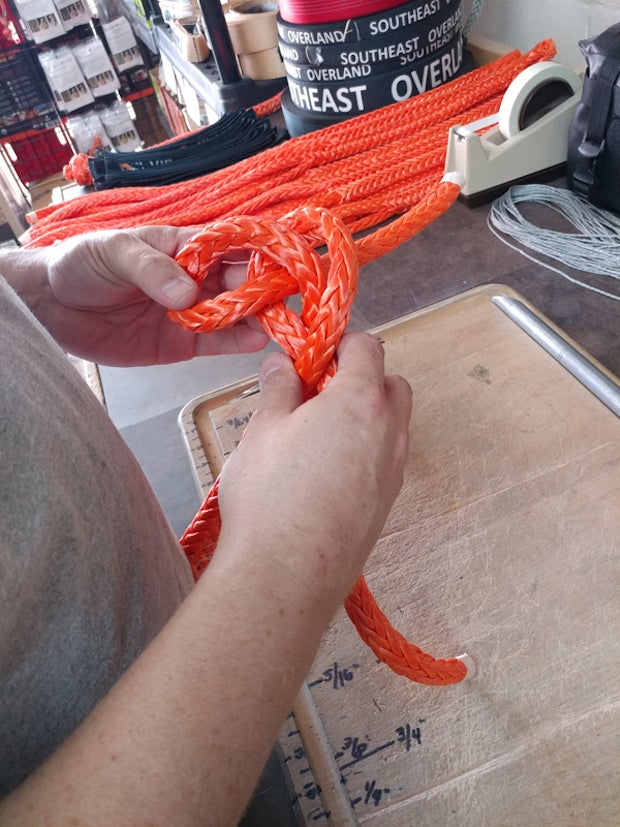
To help ensure as much of the quality argument as possible, Southeast Overland ties and manufactures their soft shackles in-house. Then they test the average-break strength (ABS) and working-load limit (WLL) of all their designs, as well as suspect shackles, because substandard or fraudulent materials will fail in testing, even if tied right.
"In the hauling and off-roading industry, there's nothing like the testing that supports and underwrites the crane and lifting industry to guarantee the quality and safety of the products used. All of our soft-shackle designs and sizes are load-tested by an independent lab. Each soft shackle is packaged with a copy of the load-testing certification, and is labeled on the shackle with its strength and when it was manufactured."
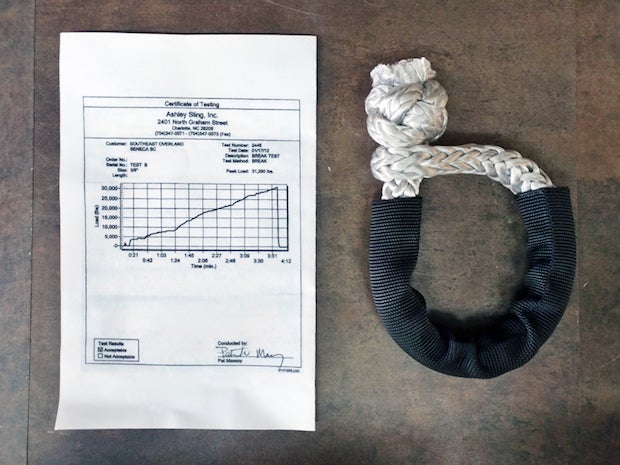
"There is a real difference in strength," insisted Springs. "In the 3/8-inch soft shackles we make – probably our best-selling product - the material we use has a linear-pull break-strength of 19,000lb. The foreign fibers - and not just the ones from China - typically break around 12-15,000lb. For example, when you buy a 12,000lb winch line, the U.S.-made lines are tested and the quality is confirmed, typically to a 1.5-times safety factor, meaning the line's break-strength is 50% stronger than is advertised. The cheaper lines made of overseas fibers are typically barely stronger than the winch rating, while U.S.-quality line is always stronger than the winch.
LED Light Covers by Brute Force
Force multiplication can be defined as making one tool serve more than one purpose. In the case of the LED-bar covers made at Brute Force in San Diego, Calif., owner and founder Ron Hanak used the advanced material and assembly capabilities already intrinsic to his upholstery business to develop and manufacture a line of fitted covers alongside the company's extant production. "I've been fortunate to be able to cross-pollinate my affinity for off-road and Brute Force covers with the ongoing family operation at Century Upholstery," smiled Hanak.
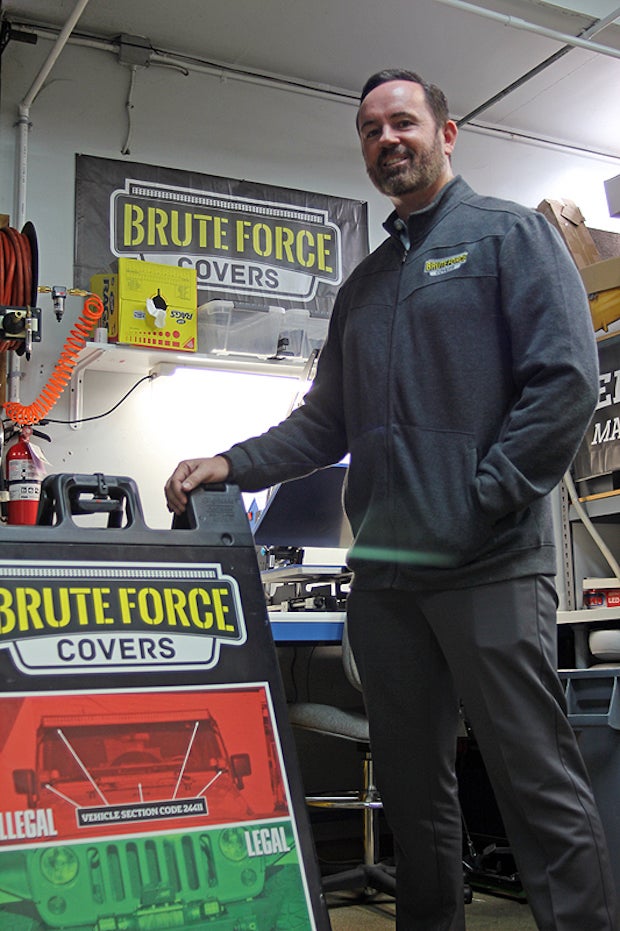
You may not know it, but in California, most auxiliary lighting on four-wheeling and desert-style trucks requires a cover when on the road. Regarding this non-factory lighting, traffic code Section 24411 states, in part, "The lamps... whenever the vehicle is operated or driven upon a highway, shall be covered or hooded with an opaque hood or cover, and turned off."
Is your light bar covered?
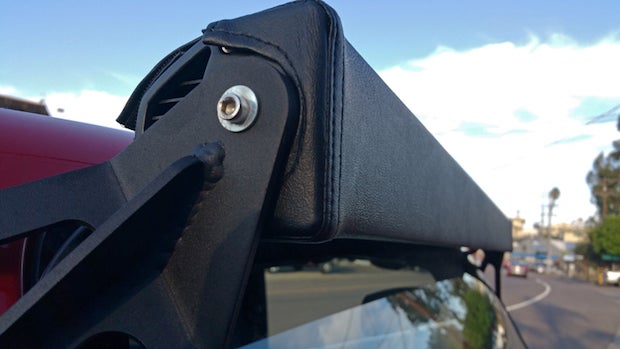
Other states and municipalities have similar regulations. The unavoidable need for dual-purpose function of folks' on and off-road vehicles (usually street-driven four-wheeling trucks and vehicles that are used in open country at night) was an impetus of CEO Hanak's original designs for Brute Force (thought he wouldn't confess as to having been ticketed for it).
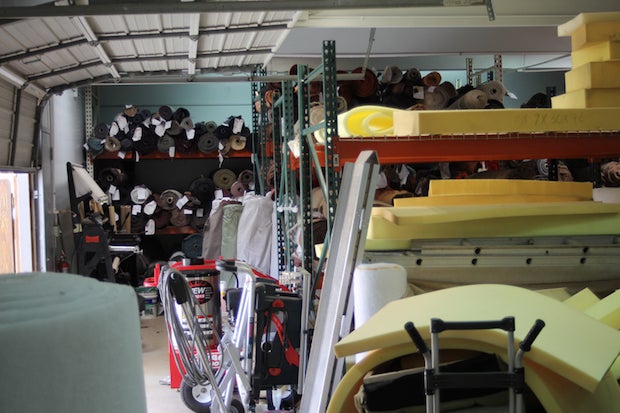
"We're able to use the same high-end materials that Century buys, like Keyston's marine-grade, anti-microbial, UV-stabilized fabrics, so we can put a five-year guarantee on our covers made with vinyl, and a three-year guarantee for neoprene," Hanak elaborated. "The thread we use is called Sunguard – heavy-duty all-weather UV-stable stuff made for awnings and outdoor furniture. Even the velcro is outdoor-friendly marine-grade material."
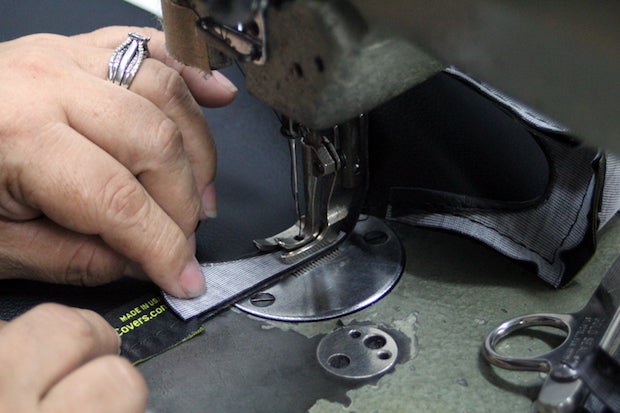
Because there are far too many ways to arrange and install high-powered desert lighting, you'd expect a lot of fitments. The materials used at Brute Force are largely cut-to-fit during assembly, so the professional seamstresses (ala Century Upholstery) can craft covers for custom sizes and curved light bars up to 54-inches wide, or down to a little four-inch pod covers. The velcro closures run the full width of the light bar so you don't need to worry about a loose fit or flapping material. That in-house control also means custom printing and embroidery is done in the same building, not by a third-party vendor.
Brute Force's LED covers are also being manufactured for LED lighting manufacturers as a factory cover option. "We make inventory as fast as we can – it sells out as quickly as we stock it. The fastest seller is the straight 52-inch double-row cover, and we get enough orders to keep a few colors in stock."
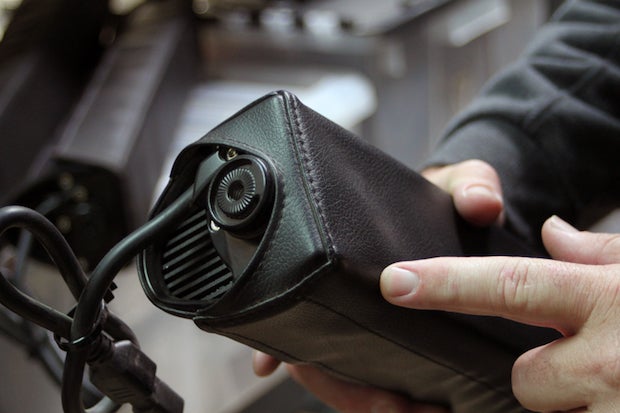
Having manufacturing localized means Hanak has no excuse but to be on top of quality control and what goes out the door. He had enough material to spare that he was able do a little testing of his own, which included wind noise (Brute Force covers wrap the entire lamp body, which reduces wind noise over the housing's cooling vanes). Speaking of cooling: tests of a fully-covered 52-inch LED bar, left on for two hours in the sun (on a JK – it's just a Jeep) revealed that even when covered, the LEDs didn't even get hot to the touch. These covers are designed to be left on for long periods; heat, sun or garage-kept.


 Your Privacy Choices
Your Privacy Choices